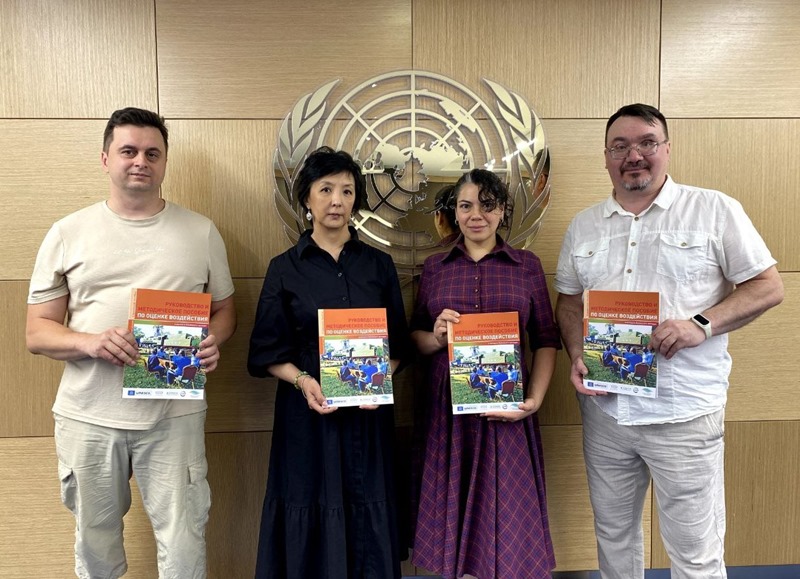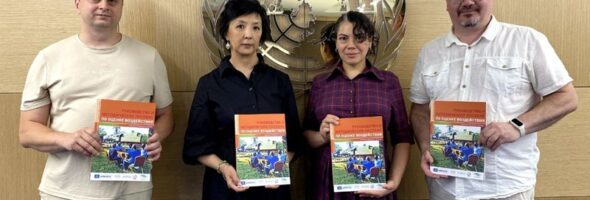
On June 11, 2024, Rivers without Boundaries and the UNESCO regional office for Central Asia in Almaty (Kazakhstan) received printed copies of the first edition of the Russian translation of the special Guidance for impact assessments in a World Heritage context. The publication was supported by the Critical Ecosystems Conservation Fund (CEPF) that runs a program on protection of key biodiversity areas in the mountains of Central Asia.
Guidance and Toolkit for Impact Assessments in a World Heritage Context provides a methodology and a set of easy-to-use tools for elaborating impact assessments to the best practice currently existing for World Heritage. It helps to identify and define the values and attributes of the site concerned, whether it is a cultural, natural or mixed cultural-natural site. It explains the process for evaluating potential impacts and finding appropriate mitigation measures and alternative options.
Guidance facilitates the use of one of the most demanded tools for monitoring the condition of World Natural and Cultural Heritage sites: integrated impact assessment of various economic projects on World Heritage proerties. Such assessments are often prescribed by the World Heritage Committee and their results are used by member countries, the International Union for Conservation of Nature (IUCN) and the UNESCO World Heritage Center to prevent degradation of heritage sites.
The publication of the Russian translation of the manual, organized by the public foundation “Rivers without Boundaries” (Rivers without Boundaries) together with the UNESCO Regional Office in Almaty, should contribute both to the prevention of damage to the World Heritage and to the identification of possible sustainable options for the further development of unique areas.
“The conservation of World Heritage is rightly considered a collective responsibility of all people on the planet, but many of these exceptional heritage sites are facing increasing pressure from various development projects,” points out Eugene Simonov, Chief Expert of Rivers Without Boundaries Public Foundation and a regular observer at the annual sessions of the UNESCO World Heritage Committee. – Offering practical advice and tools, including checklists and a glossary, this guide provides a framework for conducting impact assessments of cultural and natural heritage sites.”
“I am confident that the guidance we have published will help intersectoral and interdisciplinary cooperation both to protect World Heritage sites and to support their good quality and appropriate development,” emphasizes Aigul Khalafova, Culture Specialist at the UNESCO Almaty Regional Office. – States Parties to the World Heritage Convention, heritage managers, decision-makers, planners and developers are invited to use our guide to help realize our collective commitment to pass on the precious heritage of humanity to future generations.”
To date, 1,199 sites around the world, which have been inscribed on the World Heritage List, are landmarks of value to all humanity. The “Guidance and Toolkit for Impact Assessments in a World Heritage Context” will facilitate protection and management of World Heritage in Russia and countries of Central Asia, Caucasus and Eastern Europe where Russian language is widely used.
Guidance in Russian can be downloaded at https://rivers.help/pdf/2024_Guidance_RUS_web.pdf
Guidance in English and eight more languages can be downloaded at https://whc.unesco.org/en/guidance-toolkit-impact-assessments/


